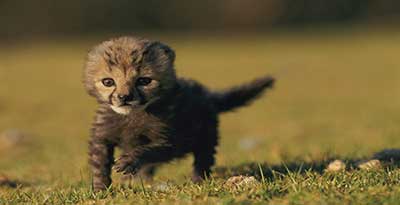Date: 20/04/2023
Relevance: GS-3: Biodiversity, Environment
Key Phrases: Cheetah Specimens, Acinonyx jubatus, Thomson's gazelles, International Union for Conservation of Nature, vulnerable, human-wildlife conflict, poaching, Project Leopard.
Context:
- The genetic material from the historical specimens has revealed that the genetic diversity of tigers and cheetahs in India has declined drastically.
- Samples extracted from the trophies of tigers, for instance, revealed that the genetic diversity of the animal in India has declined by more than 93 per cent.
Do you know?
- Cheetah is the only large carnivore to have become extinct in Independent India.
- On 11 March 2023, a breeding pair, named Oban and Aasha, were released together into the wild of Kuno National Park in Madhya Pradesh, India.
Genetic Analysis of Cheetah Specimens:
- Only six of the 22 cheetah samples connected to India have been analyzed genetically.
- The analysis shows both African and Asiatic subspecies, but establishing the subspecies is not enough to determine the wild origins of the historical cheetah specimens.
- The three most important pieces of information for any sample are the location and date of collection and the name of the collector.
- The locations of nine specimens are not available, and five apparently came from foreign localities like Africa and Afghanistan.
- The date on which about half the specimens were collected is also unknown, and the collectors for about half the specimens are unknown.
About Cheetahs:
- The cheetah (Acinonyx jubatus) is a large cat native to Africa and Southwest Asia (today restricted to central Iran).
- It is the fastest land animal, capable of running at 80 to 98 km/h (50 to 61 mph).
- It typically reaches 67–94 cm (26–37 in) at the shoulder, and the head-and-body length is between 1.1 and 1.5 m (3 ft 7 in and 4 ft 11 in).
- Adults weigh between 21 and 72 kg (46 and 159 lb).
- Its head is small and rounded, with a short snout and black tear-like facial streaks.
- The cheetah lives in three main social groups: females and their cubs, male "coalitions", and solitary males.
- While females lead a nomadic life searching for prey in large home ranges, males are more sedentary and instead establish much smaller territories in areas with plentiful prey and access to females.
- The cheetah is active during the day, with peaks during dawn and dusk.
- It feeds on small- to medium-sized prey, mostly weighing under 40 kg (88 lb), and prefers medium-sized ungulates such as impala, springbok and Thomson's gazelles.
- It breeds throughout the year.
- The gestation (pregnancy) period for the cheetah is three months.
- The cheetah occurs in a variety of habitats such as savannahs in the Serengeti, arid mountain ranges in the Sahara and hilly desert terrain in Iran.
- Unfortunately, cheetahs are classified as vulnerable species by the International Union for Conservation of Nature (IUCN) due to habitat loss, poaching, and human-wildlife conflict.

How cheetah got extinct in India?
- Habitat Loss:
- Habitat loss was one of the significant factors contributing to the extinction of cheetahs in India.
- The expansion of human settlements, agriculture, and mining resulted in the destruction of the cheetah's natural habitat.
- The loss of habitat forced the cheetahs to move to areas with insufficient prey, making it difficult for them to survive.
- Hunting:
- The cheetahs were hunted for their skin, which was used as a symbol of status by the Indian aristocracy.
- The hunting of cheetahs was not regulated, which led to a significant reduction in their population.
- Human-Cheetah Conflict:
- The conflict between humans and cheetahs was another contributing factor to the extinction of cheetahs in India.
- As humans encroached upon the cheetah's habitat, conflicts arose due to attacks on livestock, resulting in retaliation by humans.
- Other Factors:
- Other factors such as disease, genetic abnormalities, and competition with other predators may have also contributed to the extinction of cheetahs in India.
Government Steps To Conserve Wild Cats:
- Project Tiger:
- This is a flagship conservation program of the Indian government launched in 1973, which aims to protect and conserve the population of tigers in the country.
- The program involves the creation of protected areas, monitoring of tiger populations, and efforts to reduce poaching and human-tiger conflict.
- Project Leopard:
- Launched in 2018, this program aims to conserve the population of leopards in India.
- The program involves the creation of conservation reserves, habitat improvement, and capacity building of forest officials and local communities.
- National Lion Conservation Plan:
- Launched in 2018, this program aims to conserve the Asiatic lion population in India, which is found only in the Gir forest in Gujarat.
- The plan involves habitat improvement, reduction of human-lion conflict, and capacity building of forest officials and local communities.
- Wildlife Crime Control Bureau (WCCB):
- The WCCB is a statutory body established in 2007 to combat wildlife crime in India.
- The bureau coordinates with state governments, law enforcement agencies, and other stakeholders to prevent and investigate wildlife crimes, including poaching and trafficking of wild cats.
- Creation of wildlife corridors:
- The government has taken steps to create wildlife corridors to connect fragmented habitats and allow animals, including wild cats, to move freely between protected areas.
- This helps to increase genetic diversity and reduce inbreeding.
Conclusion
- The extinction of cheetahs in India was caused by a combination of factors such as habitat loss, hunting, and human-wildlife conflict.
- However, with the initiation of the reintroduction program, there is hope that the cheetah population can be restored in India.
- The success of the program will depend on effective conservation measures and community participation.
Source: The Indian Express
Mains Question:
Q. Discuss the reasons behind the extinction of the cheetah in India. What steps has the government undertaken to conserve wild cats? (250 words).







